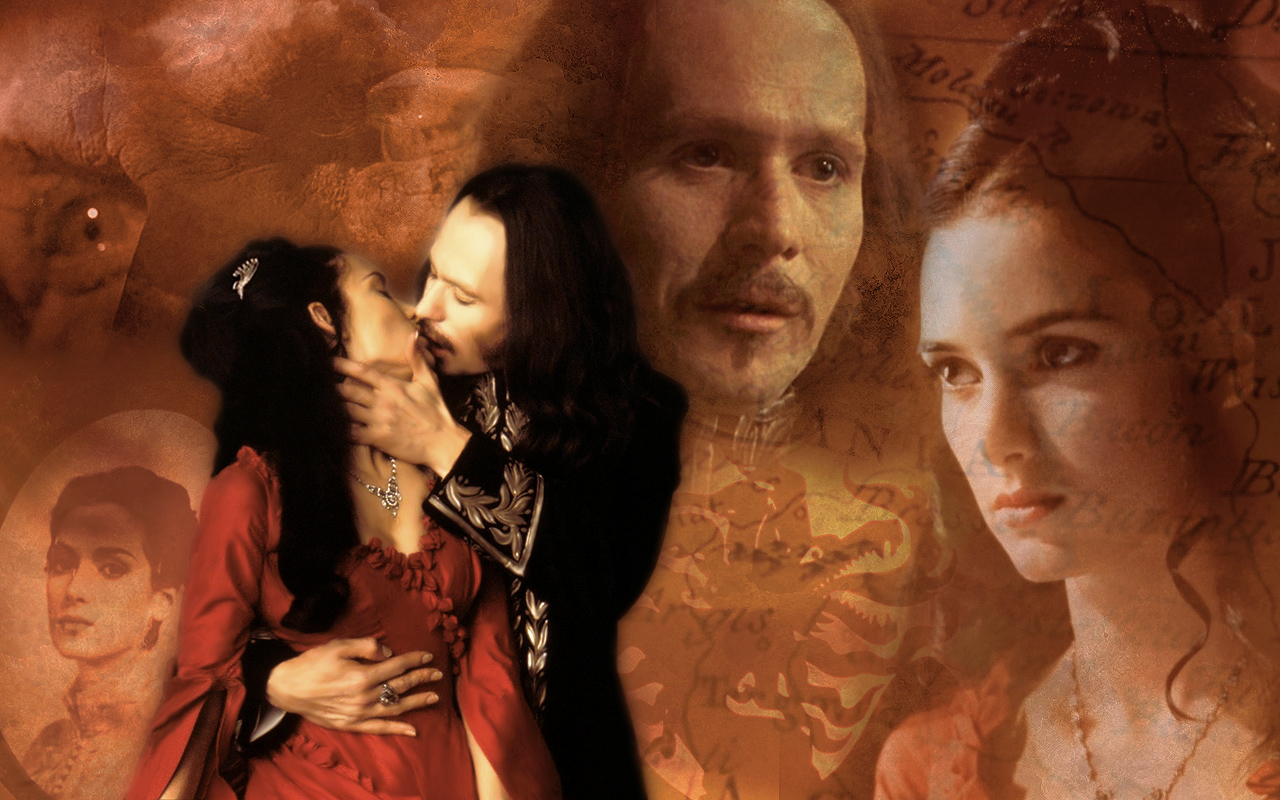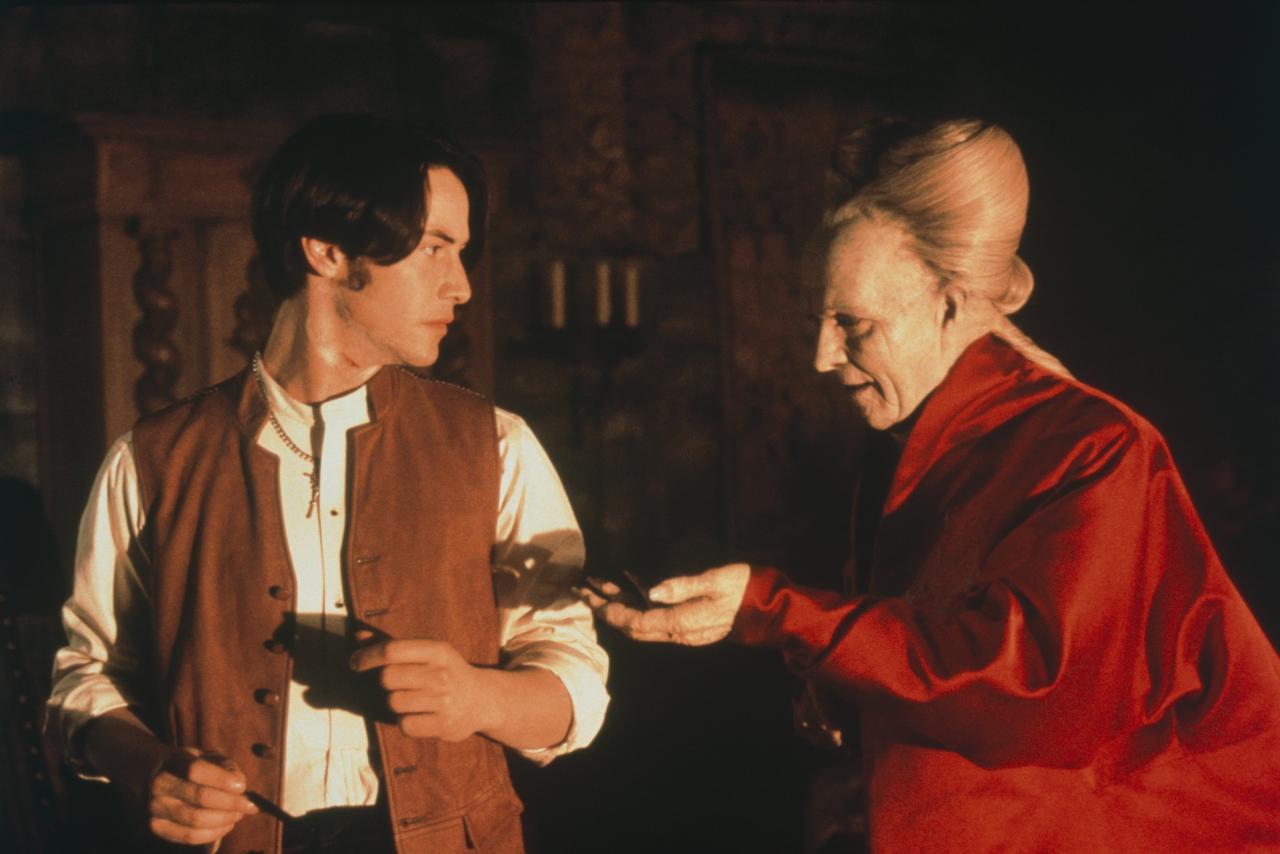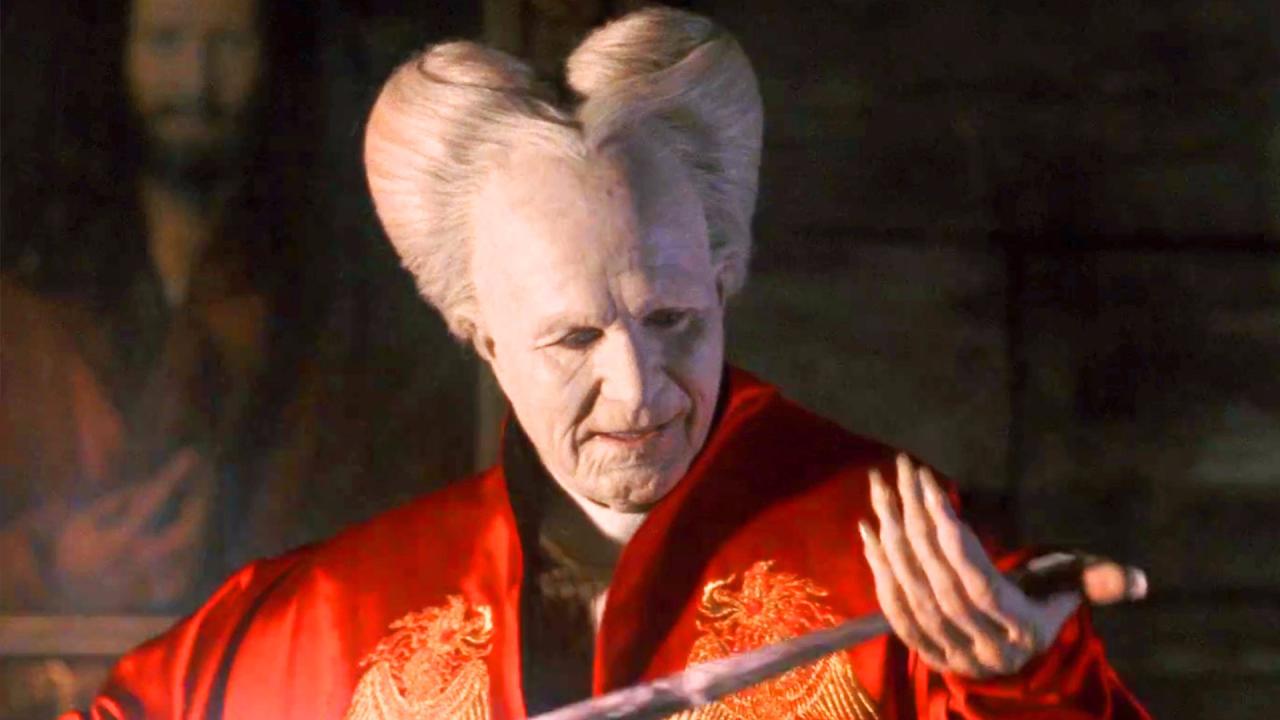Bram Stoker’s Dracula is a seminal work of Gothic literature that has captivated readers for over a century. With its haunting atmosphere, unforgettable characters, and exploration of timeless themes, Dracula remains a cornerstone of the genre and a testament to Stoker’s literary genius.
Set against the backdrop of Victorian England, Dracula tells the tale of Count Dracula, a Transylvanian vampire who travels to England in search of new victims. As a group of intrepid vampire hunters led by Professor Van Helsing race against time to stop Dracula, the novel delves into the depths of fear, sexuality, and the eternal battle between good and evil.
Bram Stoker’s Life and Background: Bram Stoker’s Dracula
Bram Stoker was born on November 8, 1847, in Clontarf, Ireland. He was the third of seven children born to Abraham Stoker, a civil servant, and Charlotte Mathilda Blake Thornley. Stoker’s father died when he was seven, and his mother raised him and his siblings.Stoker attended Trinity College Dublin, where he studied mathematics and physics.
He graduated in 1870 with a Bachelor of Arts degree. After graduating from Trinity College, Stoker worked as a civil servant for the Irish Land Commission. He also began writing short stories and articles for magazines and newspapers.In 1878, Stoker married Florence Balcombe, the daughter of a wealthy landowner.
The couple had one child, a son named Irving Noel Thornley Stoker.Stoker’s first novel, The Snake’s Pass, was published in 1890. The novel was not a commercial success, but it did help to establish Stoker as a writer of horror fiction.In 1897, Stoker published his most famous novel, Dracula.
The novel was a critical and commercial success, and it has since become one of the most popular horror novels of all time.Stoker continued to write horror fiction until his death in 1912. He published a total of 12 novels and over 100 short stories.
Influences
Stoker was influenced by a variety of sources, including the Gothic novels of the 18th and 19th centuries, the works of Edgar Allan Poe, and the folklore of Eastern Europe.Stoker’s Gothic influences are evident in his use of dark and atmospheric settings, his focus on the supernatural, and his exploration of the themes of good versus evil.Poe’s influence can be seen in Stoker’s use of suspense and terror, and his exploration of the psychological effects of fear.Stoker’s interest in Eastern European folklore is evident in his use of vampires, werewolves, and other supernatural creatures.
Historical Context of Dracula
Bram Stoker’s Dracula is a Gothic horror novel that was first published in 1897. The novel is set in Victorian England, a time of great social, political, and cultural change. The Industrial Revolution had brought about rapid urbanization and the rise of a new middle class.
At the same time, the British Empire was at its peak, and Victorian society was marked by a sense of both progress and uncertainty.
Social Climate
- The Victorian era was a time of great social change. The Industrial Revolution had led to the growth of cities and the rise of a new middle class. This new social order was often in conflict with the traditional aristocracy, leading to social tensions.
- The Victorian era was also a time of great poverty and inequality. The Industrial Revolution had created a large working class that lived in slums and often worked in dangerous and unhealthy conditions.
Political Climate
- The Victorian era was a time of great political change. The British Empire was at its peak, and the country was ruled by a constitutional monarchy. However, there was also a growing movement for democracy and social reform.
- The Victorian era was also a time of great international conflict. The British Empire was involved in a number of wars, including the Crimean War and the Boer War.
Cultural Climate
- The Victorian era was a time of great cultural change. The Romantic movement had led to a new appreciation for nature and the supernatural. This new sensibility was reflected in the Gothic literature of the period, which often featured themes of horror and the macabre.
- The Victorian era was also a time of great scientific progress. The discoveries of Charles Darwin and other scientists led to a new understanding of the natural world. This new understanding of science also had a profound impact on the culture of the period.
Plot Summary and Characters
Bram Stoker’s Draculais a classic horror novel that tells the story of Count Dracula, a Transylvanian vampire who travels to England in search of fresh blood. The novel is told through a series of journal entries, letters, and newspaper articles, which allows the reader to experience the story from multiple perspectives.
The plot begins when Jonathan Harker, a young English lawyer, travels to Dracula’s castle in Transylvania to finalize a real estate transaction. Harker soon realizes that Dracula is not what he seems, and he becomes a prisoner in the castle.
Dracula then travels to England, where he begins to terrorize the residents of a small town. A group of vampire hunters, led by Professor Abraham Van Helsing, is assembled to stop Dracula and save the town.
Main Characters
- Count Draculais the main antagonist of the novel. He is a powerful vampire who is centuries old. Dracula is intelligent, cunning, and ruthless. He is also incredibly strong and has the ability to shapeshift.
- Jonathan Harkeris a young English lawyer who travels to Dracula’s castle in Transylvania. Harker is a brave and resourceful man, but he is no match for Dracula’s power. He becomes a prisoner in the castle and is eventually turned into a vampire.
- Mina Murrayis Jonathan Harker’s fiancée. Mina is a strong and intelligent woman who is determined to save Jonathan from Dracula. She becomes a vampire hunter and plays a key role in defeating Dracula.
- Professor Abraham Van Helsingis a Dutch vampire hunter who is called in to help defeat Dracula. Van Helsing is a brilliant scientist and a master of the occult. He is the one who finally kills Dracula.
Themes and Symbolism
Bram Stoker’s Dracula is a complex and multi-layered novel that explores a wide range of themes, including fear, sexuality, and the battle between good and evil. Stoker also uses a variety of symbols throughout the novel to reinforce these themes and create a sense of atmosphere and dread.
Fear
Fear is a central theme in Dracula. The novel is filled with moments of terror and suspense, as the characters are constantly threatened by the vampire. Stoker uses vivid imagery and detailed descriptions to create a sense of dread and unease, and he keeps the reader on the edge of their seat throughout the novel.
One of the most powerful examples of fear in Dracula is the scene in which Lucy Westenra is attacked by Dracula. Stoker describes Lucy’s terror in graphic detail, and the reader can feel her fear and desperation as she fights for her life.
This scene is a powerful reminder of the power of fear, and it shows how Dracula can use it to control his victims.
Sexuality
Sexuality is another important theme in Dracula. The novel is full of sexual imagery, and many of the characters are driven by their sexual desires. Dracula himself is a sexual predator, and he uses his sexuality to control and dominate his victims.
The novel also explores the themes of love and marriage, and it shows how these relationships can be both positive and negative.
One of the most controversial aspects of Dracula is its portrayal of female sexuality. The novel has been criticized for its misogyny, and some critics have argued that it perpetuates harmful stereotypes about women. However, it is important to remember that Dracula was written in the late 19th century, and it reflects the social and cultural attitudes of that time.
The novel’s portrayal of female sexuality is a product of its time, and it should be understood in that context.
The Battle Between Good and Evil
The battle between good and evil is a central theme in Dracula. The novel is full of characters who represent both good and evil, and the reader is constantly forced to choose sides. Dracula himself is the embodiment of evil, and he represents the forces of darkness and chaos.
The characters who oppose Dracula represent the forces of good and order, and they fight to protect the world from his evil.
The battle between good and evil is a timeless theme, and it is one that has been explored in literature for centuries. Dracula is a powerful example of this theme, and it shows how the forces of good and evil can be locked in a constant struggle for control.
Symbolism
Stoker uses a variety of symbols throughout Dracula to reinforce the themes of the novel and create a sense of atmosphere and dread. Some of the most important symbols in the novel include:
- Blood:Blood is a powerful symbol in Dracula. It represents life, death, and the supernatural. Dracula’s thirst for blood is a symbol of his evil nature, and it is also a reminder of the fragility of human life.
- Garlic:Garlic is a symbol of protection against evil. In Dracula, garlic is used to keep Dracula away from his victims. This shows how the forces of good can be used to fight against the forces of evil.
- Mirrors:Mirrors are a symbol of self-reflection. In Dracula, mirrors are used to show the characters their true selves. This can be a frightening experience, but it can also be a necessary step on the path to self-discovery.
- Wolves:Wolves are a symbol of wildness and danger. In Dracula, wolves are often associated with Dracula himself. This shows how Dracula is a creature of the night, and it also reminds the reader of the danger that he poses.
Stoker’s use of symbolism is one of the things that makes Dracula such a powerful and memorable novel. The symbols in the novel work together to create a sense of atmosphere and dread, and they help to reinforce the themes of the novel.
Gothic Elements
Dracula is a Gothic novel that employs various elements of the genre to create an atmosphere of mystery, suspense, and horror.
The novel is set in a castle, a classic Gothic setting that is often associated with darkness, secrecy, and the supernatural. The castle is described as being “gloomy” and “ominous,” and it is home to Dracula, a vampire who embodies the Gothic ideal of a monster.
The darkness of the castle reflects the darkness of Dracula’s soul, and it creates a sense of foreboding that pervades the novel.
The Supernatural
The supernatural is another key element of Gothic fiction, and it is present in Dracula in the form of vampires, werewolves, and other creatures of the night. These creatures are often seen as symbols of evil and chaos, and they represent the dangers that lurk in the darkness.
The presence of the supernatural in Dracula creates a sense of unease and fear, and it keeps the reader on the edge of their seat throughout the novel.
Impact and Legacy
Bram Stoker’s Draculahas had a profound and lasting impact on literature and popular culture. Its immediate success established the vampire as a central figure in Gothic fiction and horror literature, inspiring countless imitators and adaptations.
Novel’s Enduring Legacy
The novel’s enduring legacy is evident in its numerous adaptations into film, television, and other media. These adaptations have helped to popularize the story and characters of Dracula, ensuring that the novel continues to be read and enjoyed by new generations.
Adaptations into Film and Television, Bram stoker’s dracula
- The first film adaptation of Draculawas released in 1931, starring Bela Lugosi as the titular vampire. This film is considered a classic of horror cinema and helped to establish Lugosi as the definitive Dracula.
- Since then, there have been numerous other film and television adaptations of Dracula, including the 1958 version starring Christopher Lee, the 1979 version starring Frank Langella, and the 2000 version starring Gary Oldman.
Adaptations into Other Media
- In addition to film and television, Draculahas also been adapted into other media, including comic books, video games, and stage plays. These adaptations have helped to further popularize the story and characters of Dracula, ensuring that the novel continues to be relevant and influential in contemporary culture.
Conclusive Thoughts
Dracula’s enduring legacy is a testament to its timeless appeal. Its influence can be seen in countless works of literature, film, and television, and its characters and themes continue to resonate with audiences today. As a masterpiece of Gothic horror, Bram Stoker’s Dracula remains a haunting and unforgettable tale that will continue to captivate readers for generations to come.
FAQ Insights
What is the main theme of Dracula?
Dracula explores several major themes, including fear, sexuality, and the battle between good and evil.
Who is the protagonist of Dracula?
The protagonist of Dracula is Jonathan Harker, a young lawyer who travels to Transylvania to meet Count Dracula.
What is the significance of Dracula’s castle?
Dracula’s castle is a symbol of his power and isolation. It is a place of darkness and mystery, where Dracula can indulge in his evil desires.


